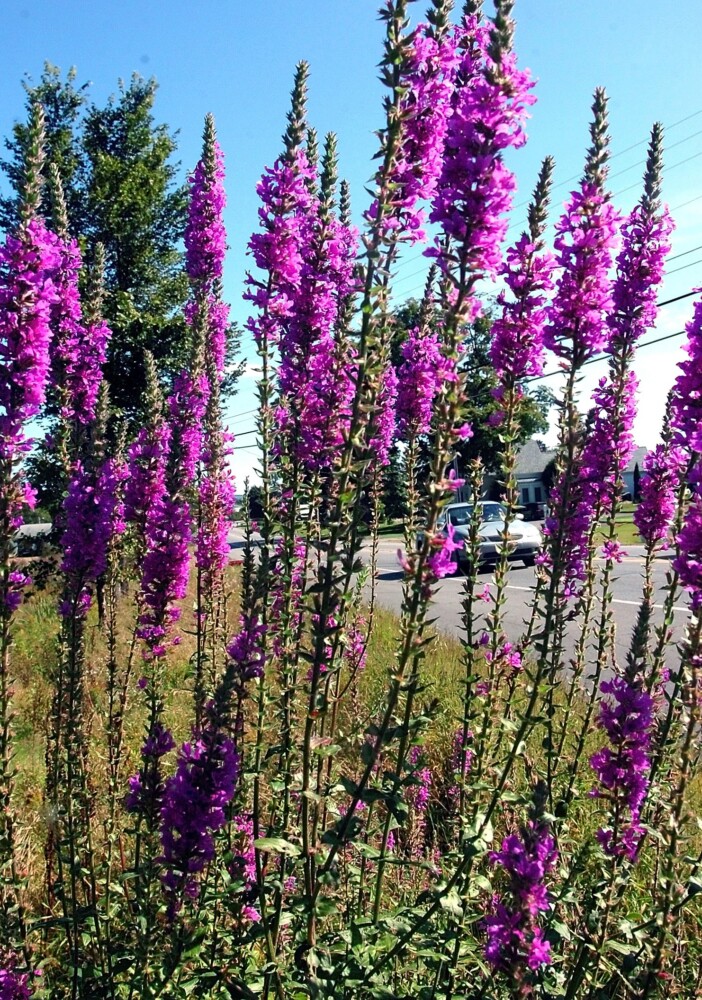No matter how hard we try, we will never get rid of the invasive plants that are taking over much of Maine – private landscapes as well as wild areas.
But just because we can’t eliminate them doesn’t mean we shouldn’t fight them.
“Eradication is not the only good goal,” said Nancy Olmstead, an invasive plant biologist with the Maine Natural Areas Program, in a talk at the Maine Landscape and Nursery Association’s annual trade show in Augusta on Jan. 22month.
Sometimes the goal will be to keep the patch of invasive plants from getting larger. Or, while it might be impossible to eliminate the plants, the production of seeds can be stopped. Or a gardener can stem the tide, not getting rid of the invasives in her garden, but at least preventing new ones from taking root. The goals may change over time, Olmstead added. After containing a patch of Japanese knotweed, for example, the next step could be to eliminate it from a specific part of a property.
The first step of any plan, though, is to find out which invasive plants are already growing on a piece of property. In some parts of the state, Olmstead said, free surveys are available. Contact the Soil and Water Conservation districts in Knox, Lincoln, Kennebec, Waldo and Somerset counties to find out if you are eligible.
Elsewhere in the state and on small properties, that survey may be a do-it-yourself project. If so, the Natural Areas Program, which is part of the Department of Agriculture, Conservation and Forestry, has a new tool: “The Maine Invasive Plants Field Guide,” published last year; Olmstead and her colleague Mary Yurlina are the lead authors.
The field guide – with laminated pages so it can withstand field conditions – describes 46 plants deemed as invasive, including some that have not yet been detected in Maine. It tells you how to identify each plant, and also provides some history and methods of control. Those methods will vary with each plant. Some that are shallow rooted can be pulled, while others can be smothered. Bringing in goats works on many invasives. Some can be controlled by a flame treatment. For others, biocontrols – or using insects that will eat the invasive – may be effective.
In all cases, Olmstead said, herbicides should be used as a last resort, if at all.
She also advised the professional landscapers in her audience to be careful not to spread invasive plants by accident when they are working to contain or remove them. Many can spread when a seed or another small piece of the plant merely touches the soil. The workers were advised to clean off their equipment – as well as their boots and clothing – whenever they move from one piece of property to another.
The problem does not end when people have dug up invasives. In most cases, the material should not be composted, because the seeds can survive the composting process. Gardeners should also avoid sending the material off-site, say, to a municipal composting facility, possibly bringing an unwanted surprise to the ultimate compost user.
If possible, let the invasive refuse dry out and then degrade close to where it was originally growing.

European barberry was introduced to New England by the colonists, who believed its bark had medicinal qualities. It’s less common in Maine than Japanese barberry, which is considered “severely invasive” here. Adriana Iacob/Shutterstock
Although it was too snowy and cold to do much of a survey after I brought my field guide home, it wasn’t too cold for reading, and I found some of the information in its pages fascinating. These troublesome plants reached North America in a variety of ways, but most were purposely introduced. I can forgive the early settlers, who brought plants such as garlic mustard, European barberry and false indigo for food or other household uses, because they did not understand that the plants would unalterably change the American landscape.
Some of the worst plants came to America as part of the ornamental horticulture business. They looked good in the garden, and horticulture businesses either didn’t know or didn’t care that the plants would escape to the wild. Others arrived by mistake, as contaminants in packing materials.
However they got here, though, they are outcompeting native plants in many ways, and it’s a deadly serious matter. In recent years, entomology and wildlife ecology Professor Doug Tallamy, and others, have taught gardeners and the rest of us how critical native plants are to supporting native wildlife.
One plant in the book, back locust, is unique. From Pennsylvania to Georgia and west to Missouri, it’s a native plant. But shifted a few hundred miles north, it is “severely invasive,” the guide says, spreading easily by long-lasting seeds and suckering. So when you buy natives, gardeners, check to make sure they are native to Maine, or at least to New England – not just the United States.
Tom Atwell is a freelance writer gardening in Cape Elizabeth. He can be contacted at: tomatwell@me.com.
Send questions/comments to the editors.



Success. Please wait for the page to reload. If the page does not reload within 5 seconds, please refresh the page.
Enter your email and password to access comments.
Hi, to comment on stories you must . This profile is in addition to your subscription and website login.
Already have a commenting profile? .
Invalid username/password.
Please check your email to confirm and complete your registration.
Only subscribers are eligible to post comments. Please subscribe or login first for digital access. Here’s why.
Use the form below to reset your password. When you've submitted your account email, we will send an email with a reset code.